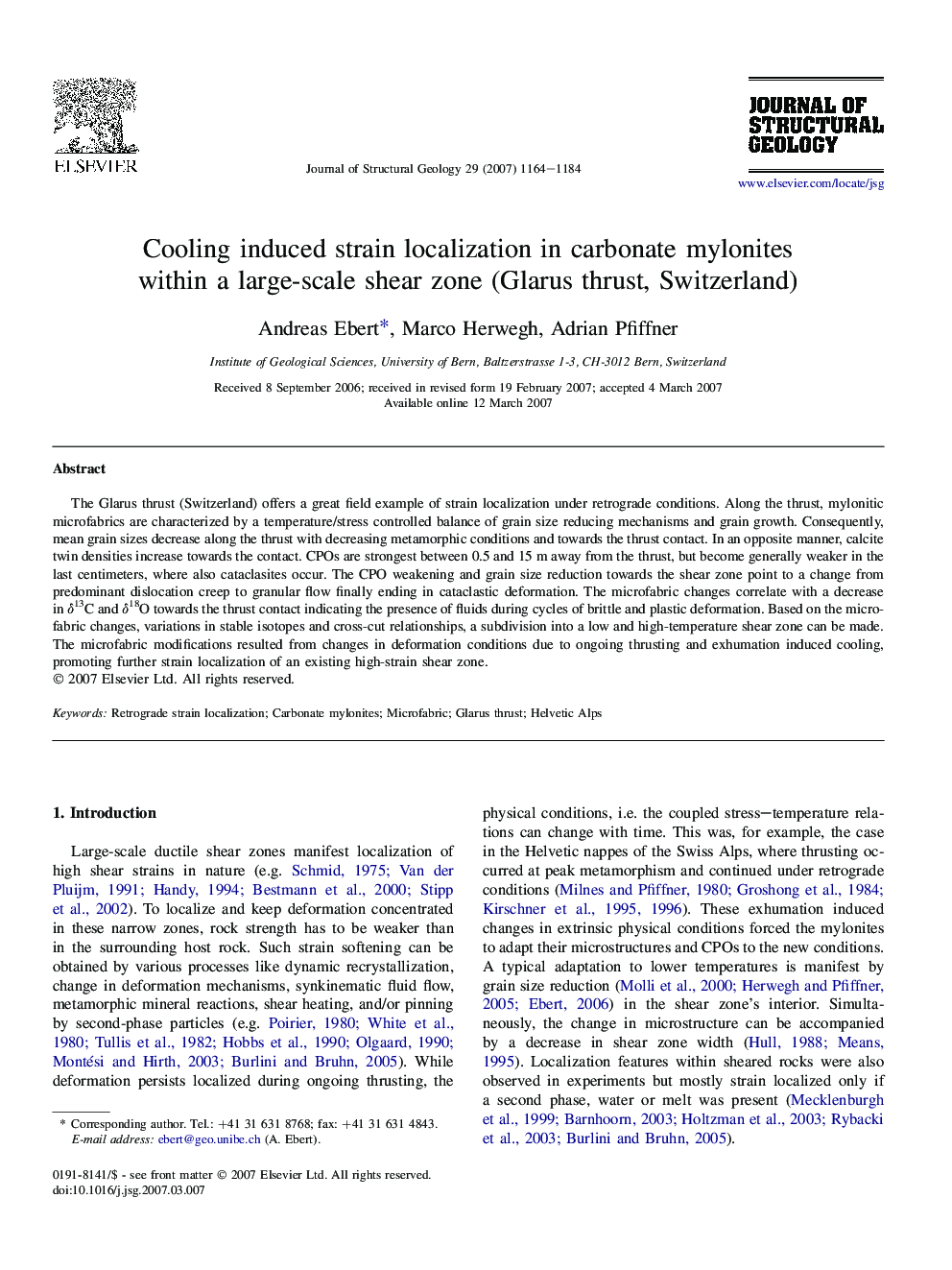| Article ID | Journal | Published Year | Pages | File Type |
|---|---|---|---|---|
| 4733909 | Journal of Structural Geology | 2007 | 21 Pages |
The Glarus thrust (Switzerland) offers a great field example of strain localization under retrograde conditions. Along the thrust, mylonitic microfabrics are characterized by a temperature/stress controlled balance of grain size reducing mechanisms and grain growth. Consequently, mean grain sizes decrease along the thrust with decreasing metamorphic conditions and towards the thrust contact. In an opposite manner, calcite twin densities increase towards the contact. CPOs are strongest between 0.5 and 15 m away from the thrust, but become generally weaker in the last centimeters, where also cataclasites occur. The CPO weakening and grain size reduction towards the shear zone point to a change from predominant dislocation creep to granular flow finally ending in cataclastic deformation. The microfabric changes correlate with a decrease in δ13C and δ18O towards the thrust contact indicating the presence of fluids during cycles of brittle and plastic deformation. Based on the microfabric changes, variations in stable isotopes and cross-cut relationships, a subdivision into a low and high-temperature shear zone can be made. The microfabric modifications resulted from changes in deformation conditions due to ongoing thrusting and exhumation induced cooling, promoting further strain localization of an existing high-strain shear zone.
